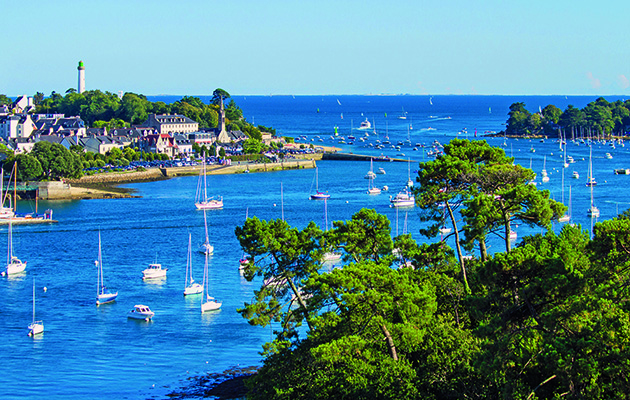James Stevens answers your questions of seamanship - this month, what should you do when the buoys you see don't match the chart?
Do you trust the buoys or the chart?
Question:
Jake is on a cross-Channel cruise with his wife Annie and teenage daughter Jill. They are on board the family yacht Wind Rode, a Beneteau First 29, 9m long with a fin keel and draught of 1.2m.
Annie has worked out that they should be able to visit Saint-Valery-sur-Somme, an interesting and historic port between Dieppe and Boulogne.
It is going to be pretty shallow and there is a huge area of sand with a winding buoyed channel on the way in, so Annie has checked and rechecked her tidal heights.
On the day the wind is light and there is a gentle swell. It doesn’t look dangerous but it is important not to let Wind Rode hit the hard sand on the way in.
Jake is on the helm with Jill on deck, armed with the binoculars. Annie is navigating. Annie’s plan is to find the ATSO buoy off the entrance and then aim for the first of the channel buoys about 2 miles away on 140° True.
Continues below…
Running out of fuel up a narrow tidal river
James Stevens answers your questions of seamanship - this month, what would you do if you ran out of fuel…
Calamity strikes and a lee shore looms
James Stevens answers your questions of seamanship. This month, what would you do in a Force 7 with no sail,…
How would you safely retrieve this dinghy?
James Stevens answers your questions of seamanship - this month, would you know what to do if you had to…
At the ATSO buoy, visibility is about 2 miles, but as Jill scans the coast through the murk with the binoculars she can’t make out the channel buoys.
Annie decides that they should cautiously head towards the charted position of the buoys and keep a close eye on the echo sounder.
They creep in, the depth drops and they are now only a mile off where the buoys should be. They can easily see ATSO a mile behind, so the channel should be visible.
Just then Jill notices a pair of red and green buoys a mile off and almost abeam.
Inshore there appear to be more buoys. They are clearly some distance from the charted position. Is that the correct channel? Do they trust the buoys or the chart?
Answer:
Ports like Saint-Valery-sur-Somme with large sandbanks guarding the entrance are going to have channels which move with every gale.
Unfortunately, those same gales can cause the buoys to drift out of position also.
However, if there are two buoys, red and green, and it looks as if there are further buoys inshore you can be pretty sure that the harbour master has moved the buoys to mark the new channel.

At this point neither Annie’s carefully drawn pilotage plan nor the GPS and chart plotter are going to be much use.
Annie needs to direct Jake to the first buoy, identifying the next ones as they approach and tick them off as they go in. In this situation it is really easy to miss one out so all the crew should be on deck to assist.
Annie would be well advised to sketch the track to give a guide for the way out – providing the harbour master doesn’t move the buoys while they are in the port.
Buoys only need to be moved where the sea bed is muddy or sandy, when rough weather or strong tides move the channel.
If in doubt, a quick call to the harbour master will confirm.







